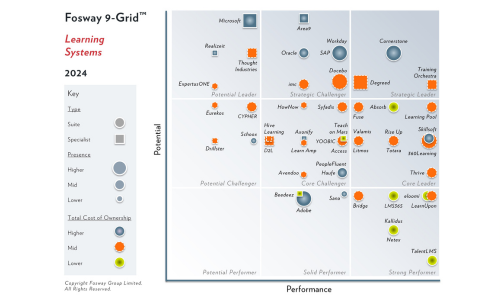Preparing Your Organization for L&D with Capacity Building Strategies
Good training requires a solid foundation. When L&D professionals design instruction, ensuring they have adequate infrastructure is imperative to the success of the training experience. Clear communication, shared expectations for roles and responsibilities, and mechanisms for feedback and continuous improvement are examples of activities outside of instructional design that contribute to a sturdy foundation. But when we think about what is needed to establish a strong infrastructure, we need to look beyond isolated training courses and look to the future.
Capacity building provides us with an opportunity to build an organizational culture that is adaptable and can sustain long-term growth and performance. The objective is to strengthen the organization’s ability to operate efficiently, adapt to change, and sustain long-term growth. Capacity-building efforts go hand in hand with strategic planning and needs assessment to help organizations achieve their performance goals more effectively.
When we shift our thinking to infrastructure, capacity building helps us envision and develop the necessary scaffolds to build an organizational culture that embraces L&D. Capacity building addresses various aspects of organizational development. This might include upgrading technological infrastructure, implementing governance and oversight (i.e., processes, and policies), improving communication and collaboration among team members, and fostering a culture of continuous learning.
How to approach capacity building for L&D
Here are five questions L&D professionals should ask when discussing what capacity building looks like for L&D.
1. What are the organization’s strategic goals?
An organization’s strategic plan serves as a roadmap for the next couple of years. L&D initiatives should be connected to an organization’s strategic goals to ensure that training programs are contributing to the direction of the organization. Understanding the organization’s mission, vision, and long-term performance goals helps to identify what skills and competencies are required by the workforce to support these goals. By aligning training with these targets, organizations can ensure that employees are equipped with the knowledge and abilities necessary to achieve key outcomes.
2. What specific knowledge and skills are needed?
Capacity building helps L&D professionals map out what knowledge and skills are needed by employees to meet the goals of today in addition to the goals of the future. A thorough assessment of the organization’s goals allows leaders to identify the competencies that will drive success, whether it’s technical expertise, leadership abilities, or customer service excellence. By mapping these essential skills to specific roles and responsibilities, companies can design training programs that directly contribute to achieving their goals. This alignment ensures that employees are equipped with the relevant knowledge and tools to perform their roles effectively and adapt to changing market demands.
3. What training methods are most effective?
Once an organization begins pinpointing what knowledge and skills are required to support the long-term growth of the organization, an appropriate follow-up question is to inquire about what training methods are needed. Instructional design is not a one-size-fits-all. L&D professionals can begin to engage with organizational stakeholders and learners to determine what’s the best approach for disseminating information to our learning audience. This may include instructor-led courses, asynchronous e-learning modules, micro-learnings, just-in-time learning, etc.
4. How will L&D be evaluated?
Evaluating the extent to which training is meeting its intended goals and outcomes is an important part of L&D. When we think about capacity building, it’s important to think about what metrics are needed to measure the effectiveness of training immediately and over several months to years. It’s important to think about how evaluation can be used as a framework to understand the extent to which L&D initiatives are contributing to the organization’s overall success.
By establishing robust evaluation metrics, organizations can measure whether training initiatives are achieving the desired outcomes, such as improved employee performance, enhanced skill sets, or increased productivity. Evaluation also enables organizations to identify areas for improvement, refine training content, and ensure that resources are being used efficiently. Moreover, consistent evaluation helps create a feedback loop that promotes continuous learning within the organization.
5. How will organizational support be garnered?
Capacity building does not over a matter of days, weeks, or months. Recognizing that capacity building takes years, organizational leadership must make an intentional investment to support L&D efforts. It is important to engage and communicate with stakeholders, discuss the benefits of L&D as it relates to the organization’s overall strategic goals, and provide mechanisms to obtain feedback to support continuous improvement and identify employees’ training needs.
Creating a culture that champions L&D involves encouraging leaders across departments and functions within the organization to actively participate in training sessions, serve as mentors, and publicly endorse the benefits of L&D. By building a network of advocates at various levels of the organization, you can create a supportive environment that values and prioritizes ongoing employee development.
Organizations that prioritize capacity building are better positioned to innovate, respond to market demands, and pursue new business opportunities. Ultimately, capacity building is about empowering organizations to realize their full potential by building a strong, adaptable, and sustainable infrastructure.





